#Northrop A-17
Explore tagged Tumblr posts
Photo
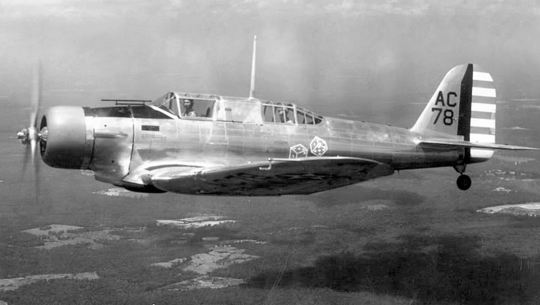
Avion d’attaque au sol Northrop A-17 du 90th Attack Squadron près de la base aérienne de Barksdale – Louisiane – Etats-Unis – 1936
©United States Army Air Corps - USGOV-PD
#Avant-guerre#Pre-war#Armée de l'Air américaine#United States Army Air Corps#USAAC#90th Attack Squadron#90th Fighter Squadron#Aviation militaire#Military aviation#Avion d'attaque au sol#Ground-attack aircraft#Northrop A-17#A-17#Base aérienne de Barksdale#Barksdale field#Louisiane#Louisiana#Etats-Unis#USA#1936
31 notes
·
View notes
Text

A YF-16 and YF-17 Dec. 1972 (r.l. house)
@kadonkey via X
#yf-16#general dynamics aviation#fighter#yf-17#northrop aviation#prototype#aircraft#usaf#aviation#cold war aircraft
29 notes
·
View notes
Note
Have you heard about the global day of action on March 2?
Yes! I have! Here's more info about it (click). Here, from the "About" section:
There is a growing global movement for a Free Palestine. Across the world, millions of people are engaging in demonstrations and organizing major marches in solidarity with Palestine. Our demands for an immediate ceasefire, cutting all aid to Israel, and lifting the siege on Gaza have broader support than ever. On November 4th, over 500,000 gathered in Washington DC for the largest march in recent times to stand in solidarity with Palestine. Protests with half a million people erupted on the streets of London, constituents across Canada occupied over 17 MP offices from coast to coast, and Belgian dock workers' unions have refused to transport weapons by plane or sea that are destined for Israel. We must keep building momentum and increase the pressure with more marches, walk-outs, sit-ins, and other forms of direct action directed at the political offices, businesses, and workplaces that fund, invest, and collaborate with Israeli genocide and occupation. NOW is the time for our mobilizations to grow in size, frequency, and focus; building a political climate that makes Israel’s business of genocide unsustainable.
Already protesters have shut down highways, train stations, and bridges in the United States; activists have targeted Israeli weapons manufacturers; Belgian dockworkers’ unions have refused to handle weapons transports to Israel; Bolivia has cut diplomatic ties with Israel while Jordan, Chile, and Colombia have recalled their Israeli ambassadors. Be part of the change, take action, and make your voice heard as the global struggle for Palestine enters a new phase.
Join the Shutdown for Palestine on Friday, December 8, 2023. We call on movements, organized labor, youth, students, media and healthcare workers, and all members of society to join us in demanding an immediate ceasefire, cutting all aid to Israel, and lifting the siege on Gaza. This call to action started on November 9, but we will continue to build up the momentum with ongoing days of action. No business as usual until Palestine is Free!
Walk out from work and/or school
Picket Israeli embassies and consulates
Picket against companies that profit from Israel’s occupation of Palestine (Lockheed Martin, Boeing, Raytheon, Northrop Grumman, General Dynamics, Elbit Systems)
Host speak outs
Wear kuffiyehs
Wear black armbands
860 notes
·
View notes
Text






The Northrop YF-17 Cobra, developed in response to many in the fighter community believing that aircraft like the F-15 Eagle were too large and expensive for many combat roles.
29 notes
·
View notes
Text
The age of the students at Bullworth Academy (part I)
I found it interesting and fun to find out the age of the students. Of course, for each student there will be arguments, but it is possible that I am wrong.
Details:
-> I'm going to assume that Bullworth Academy is a high school
-> Since it is a high school located in the United States, four years ago and not three as in Europe (ex: France). That's why I'm going to make the following cut:
1st year: 14-15 years old - Freshman
2nd year: 15-16 years old - Sophomore
3rd year: 16-17 years old - Junior
4th year: 17-18 years old - Senior
Bullies:
Russell Northrop:
In the U.S. system, you can get a driver's license between the ages of 14 (for one state) and 17 years old. Most states have set the age of 16 for obtaining a driver's license. However, knowing that Bullworth Academy is located in New England, the age to obtain a driver's license is between 16 years and 16 years and 6 months. So we can already rule out the fact that Russell is a Freshman and a Sophomore.
In the mission Busting In (Part I), we can see Russell riding a police motorcycle that he stole. He is then chased by the police not because he has restrictions (yes, people under the age of 18 have restrictions when they get the license) but because he stole the car. Also, if we get used to his imposing physique and his minimal intellectual skills for his age, we can assume that he is 17-18 years old and is a senior.
Davis White:
"You know something's wrong when a freshman fights back, we didn't do that in the old days!" With this line of dialogue, we can say that Davis is not a freshman, therefore a 1st year student. Moreover, if we look at the "old days", we can make the assumption that Davis' 1st year was a very long time ago like several years ago. It can then be assumed that Davis is a 17-18 year old senior.
Trent Northwick:
Truth be told, I couldn't find anything that could tell me Trent's age other than the fact that he uses the word "kid" in a line of dialogue. I had thought that he would be a 17-18 year old senior to talk about a student like that but no certainty so I leave it hanging for the moment.
Troy Miller:
Troy wants to join the military when he reaches the minimum age of 17, which means he's neither a junior nor a senior. In a line of dialogue when he loses a fight, he can be heard saying, "So much for the army…" We can understand from this sentence that he probably seemed close to being able to enter the army but that this possibility now seems to be over. Thus, it can be assumed that Troy is a 15-16 year old sophomore.
Ethan Robinson:
During Chapter 2, Ethan can be heard saying: "I can't believe the Carnival's already here! This year's just flyin' by". From that, we can put aside the possibility that he is a first-grader since he has already experienced carnival while being at Bullworth Academy. Afterwards, his sentence may mean that compared to other years, the carnival is already here. So I'm torn between saying he's a 16-17 year old junior or a 17-18 year old senior.
Tom Gurney:
As far as Tom is concerned, I initially thought he was a 14-15 year old freshman or a 15-16 year old sophomore because in a line of dialogue he says: "I'm too young". However, in some lines of dialogue, he uses the word "kid". That's why I came to think that he couldn't be a freshman or a sophomore because it would be ridiculous to call someone the same age as you or a year apart. I'm mixed between the fact that he's a 16-17 year old junior and a 17-18 year old senior.
Wade Martin:
Wade remains for me the biggest mystery of the band. No matter how much I've gone through all of his lines of dialogue and his profile, I haven't found anything concrete that could make me go on a track. At the very least, in a line of dialogue, he says: "My dad says he's gonna buy me some condoms so I can like, do it with chicks, y'know?" Knowing that the sexual majority in New England is 16, I thought he might be a 16-17 year old junior but that's a far-fetched theory right?
That's the end of this first part. In the next one, I'm going to deal with the Preppies. Feel free to let me know what you think. Au revoir
#bully canis canem edit#canis canem edit#bully cce#bully game#bullies#russell northrop#davis white#trent northwick#wade martin#tom gurney#ethan robinson#troy miller#bully scholarship edition
59 notes
·
View notes
Text
2024 Book List
January
1. Trances of the Blast, Mary Ruefle
2. Falling Star, Patricia Moyes
3. Labyrinths, Jorge Luis Borges
4. Introduction to the Work of Marcel Mauss, Claude Lévi-Strauss
5. The Sweet Dove Died, Barbara Pym
6. The Prison-House of Language, Fredric Jameson
7. The Order of Things, Michel Foucault
8. Illuminated Manuscripts, Tamara Woronowa and Andrej Sterligow
9. Structuralism, John Sturrock
February
10. Immediacy; or the Style of Too Late Capitalism, Anna Kornbluh
11. The Dark Frontier, Eric Ambler
12. Macbeth, William Shakespeare
13. Michel Foucault: Beyond Structuralism and Hermeneutics, Hubert Dreyfus and Paul Rabinow
14. Don’t Look at Me Like That, Diane Athill
15. The Most of It, Mary Ruefle
16. The Archaeology of Knowledge, Michel Foucault
March
17. Henry IV Part 1, William Shakespeare
18. A Murder Is Announced, Agatha Christie
19. Shakespeare, Johan Gottfried von Herder
20. Literary Theory for Robots, Dennis Yi Tenen
21. Henry IV Part 2, William Shakespeare
22. Richard II, William Shakespeare
23. Lucy Gayheart, Willa Cather
24. Henry V, William Shakespeare
25. Mimesis, Expression, Construction, Fredric Jameson
26. Four-Legged Girl, Diane Seuss
27. Death of a Nationalist, Rebecca Pawel
28. The Flight From the Enchanter, Iris Murdoch
29. The Purloined Clinic, Janet Malcolm
April
30. King Lear, William Shakespeare
31. White Butterfly, Walter Moseley
32. Humanism and Antihumanism, Kate Soper
33. The Illusion of the End, Jean Baudrillard
34. Discourse on Method, René Descartes
35. Meditations on First Philosophy, René Descartes
36. Cambridge Companion to Descartes, John Cottingham ed
37. The Ordinal Society, Marion Fourcade and Kieran Healy
38. Much Ado About Nothing, William Shakespeare
39. Primer, Bob Perelman
40. As You Like It, William Shakespeare
May
41. A Midsummer Night’s Dream, William Shakespeare
42. The Ballad of Peckham Rye, Muriel Spark
43. Preface to Shakespeare, Samuel Johnson
44. The Weariness of the Self, Alain Ehrenberg
45. Harmonium, Wallace Stevens
46. Mr. Scarborough’s Family, Anthony Trollope
47. Computing Taste, Nick Seaver
48. Hamlet, William Shakespeare
June
49. On Shakespeare, Northrop Frye
50. The Taming of the Shrew, William Shakespeare
51. The Double Shift, Jason Read
52. Romeo and Juliet, William Shakespeare
53. La Vendée, Anthony Trollope
54. Mirror Worlds, David Gelertner
55. The Commercialization of Intimate Life, Arlie Hochschild
July
56. In Our Own Image, Fred Ritchin
57. Bending the Frame, Fred Ritchin
58. After Photography, Fred Ritchin
59. Cue the Sun!, Emily Nussbaum
60. Appointment With Death, Agatha Christie
61. The Friend, Sigrid Nunez
62. Libra, Don DeLillo
63. The Interpretation of Cultures, Clifford Geertz
64. Mimesis, Erich Auerbach
65. Julius Caesar, William Shakespeare
August
66. Antony and Cleopatra, William Shakespeare
67. Nonrequired Reading, Wisława Szymborska
68. Traveling, Ann Powers
69. Annie Bot, Sierra Greer
70. Regency Buck, Georgette Heyer
71. Coriolanus, William Shakespeare
September
72. Troilus and Cressida, William Shakespeare
73. Fools of Time, Northrop Frye
74. Bel Canto, Ann Patchett
75. Measure for Measure, William Shakespeare
76. William Shakespeare, Terry Eagleton
77. Shakespeare’s Problem Plays, E.M.W. Tillyard
78. Twelfth Night, William Shakespeare
79. The Merchant of Venice, William Shakespeare
80. Othello, William Shakespeare
81. AI Snake Oil, Arvind Narayanan and Sayash Kapoor
82. Passage of Arms, Eric Ambler
October
83. All’s Well That Ends Well, William Shakespeare
84. The Book of the Courtier, Baldesare Castiglione
85. Fables of Aggression, Fredric Jameson
86. Intermezzo, Sally Rooney
87. The Pleasure of the Text, Roland Barthes
88. Liars, Sarah Manguso
89. James, Percival Everett
November
90. Aesthetics and Politics, Bertholt Brecht, Walter Benjamin et al.
91. Protocol, Alexander Galloway
92. Sartor Resartus, Thomas Carlyle
93. The Unaccountability Machine, Dan Davies
94. Timon of Athens, William Shakespeare
95. Machines Who Think, Pamela McCorduck
December
96. Henry VI, Part 1, William Shakespeare
97. Henry VI, Part 2, William Shakespeare
98. The Triumph of Achilles, Louise Glück
99. All Shot Up, Chester Himes
100. The Saint-Fiacre Affair, Georges Simenon
101. Henry VI, Part 3, William Shakespeare
8 notes
·
View notes
Text
The Original Crew of Gemini 9

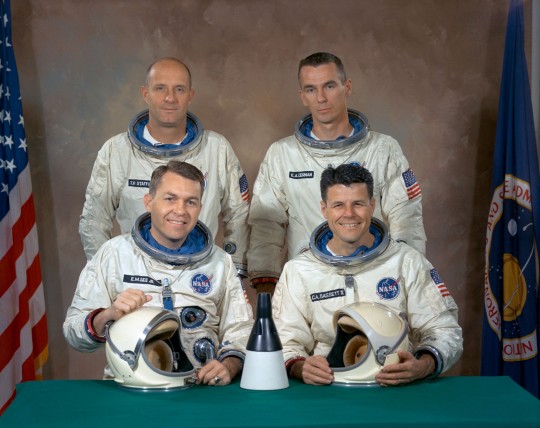
"Portrait of the Gemini 9 prime and backup crews. Seated are the Prime crew consisting of Astronauts Elliot M. See Jr. (left), command pilot, and Charles A. Bassett II, pilot. Standing are the backup crew consisting of Astronauts Thomas P. Stafford (left), command pilot, and Eugene A. Cernan, pilot."
The original prime crew of Gemini 9 (GT-9) was to be Elliot M. See Jr., command pilot, and Charles A. Bassett II, pilot. They were a part of NASA Astronaut Group 2 "New Nine" and Group 3 "The Fourteen", respectively, and this would have been their first spaceflight. On February 28, 1966, about four months before their scheduled May 17 spaceflight, they and the backup crew flew in two T-38s from Houston, Texas to St. Louis, Missouri. They were there for two weeks of simulator training for rendezvous and docking procedures, and to inspect their Gemini spacecraft at the McDonnell Aircraft plant.
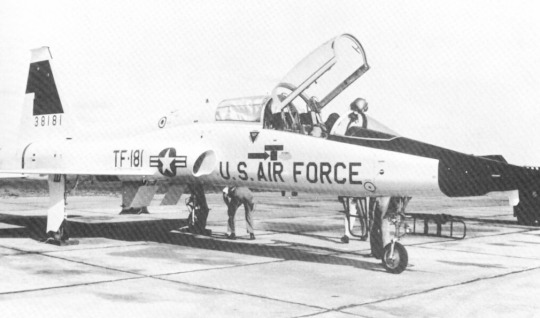
"See and Bassett flew in one Northrop T-38A Talon jet trainer, tail number NASA 901 (Air Force serial number 63-8181), with See at the controls and Bassett in the rear seat. A second T-38, NASA 907, carried Stafford and Cernan in the same configuration. Weather at Lambert Field in St. Louis was poor, with rain, snow, and fog, broken clouds at 800 ft (240 m) and a cloud ceiling of 1,500 ft (460 m), requiring an instrument approach. When the two aircraft emerged below the clouds shortly before 9 am, both pilots realized that they had missed the outer marker and overshot the runway.
See then elected to perform a visual circling approach, a simplified landing procedure allowing flight under instrument rules, as long as the pilot can keep the airfield and any preceding aircraft in sight. The reported weather conditions at the airport were adequate for this type of approach, but visibility was irregular and deteriorating rapidly. Stafford began to follow See's plane, but when he lost sight of it in the clouds.

Astronaut Elliot M. See Jr. inside Gemini Static Article 5 spacecraft prior to water egress training in the Gulf of Mexico.
"As See and Bassett’s jet vanished from sight, Stafford barked to Cernan in his backseat: 'Goddammit, where’s he going?' It was the last they ever saw of their comrades."
"Stafford instead followed the standard procedure for a missed approach and pulled his aircraft up, back into the clouds for another attempt at an instrument landing.
See completed a full circle to the left at an altitude of 500 to 600 ft (150 to 180 m), and announced his intention to land on the southwest runway (24). With landing gear down and full flaps, the plane dropped quickly but too far left of the runway. See turned on his afterburner to increase power while pulling up and turning hard right. Seconds later, at 8:58 a.m. CST, the plane struck the roof of McDonnell Building 101 on the northeast side of the airport. It lost its right wing and landing gear on impact, then cartwheeled and crashed in a parking lot beyond the building which was in use as a construction staging area."



"The wreckage of their T-38 training jet, covered with firefighting foam. The jet clipped the roof of Building 101 with its right wing, then skipped twice along the roof before plunging into a construction yard nearby and exploding."
Both astronauts died instantly from trauma sustained in the crash. Inside Building 101, 17 McDonnell employees and contractors received mostly minor injuries from falling debris. The crash set off several small fires inside the building, and caused minor flooding from broken pipes and sprinklers. Stafford and Cernan didn't see the crash and made an instrument landing 14 minutes later. They were asked by the control tower, “Who was in NASA 901?” Stafford replied back “See and Bassett." They were told that McDonnell Aircraft Corp. had a message for them. "A few minutes later, as Stafford opened his canopy, there was James McDonnell ('Mr. Mac' himself, aviation pioneer and founder of McDonnell Aircraft Corp.) waiting for them. In solemn tones, he explained that See and Bassett were dead."

"A truck slowly pulls the Gemini IX capsule past flags at half staff at a McDonnell parking lot on March 2, 1966, in memory of the two astronauts who were to have flown it into space."

See, 38, had been a civilian test pilot and the married father of two girls. Bassett, 34, an Air Force pilot, left a wife, a daughter and a son.
"Alan Shepard and Deke Slayton flew to St. Louis to lead an investigation. Their closed investigative hearing was held in Building 101. On May 27, their report cited deteriorating weather conditions and a descent that was too steep for See to pull out."
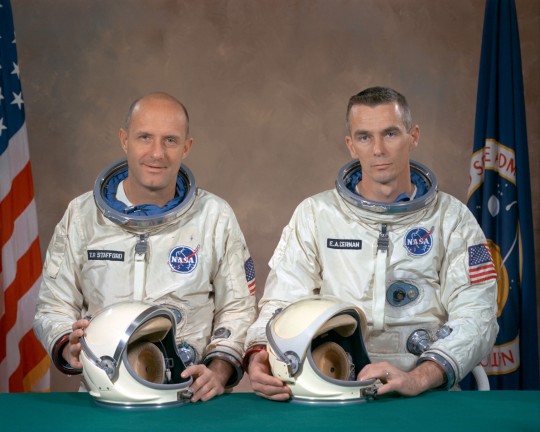
The backup crew, Thomas P. Stafford (left), command pilot, and Eugene A. Cernan, pilot.
"The promotion of Stafford and Cernan from backup to prime crew meant that a new backup crew was required. Jim Lovell and Buzz Aldrin were originally the backup crew for Gemini 10. This is significant as the standard crew rotation meant that a spot on the backup crew of Gemini 10 would have placed Buzz Aldrin on the prime crew of the non-existent mission after Gemini 12 (the crew rotation usually meant that after serving on a backup crew, an astronaut could expect to skip two missions and then be on a prime crew). Being moved up to the backup crew of Gemini 9 meant that Aldrin flew as part of the prime crew on Gemini 12, which played a major part in his selection for the Apollo 8 backup and Apollo 11 prime crews, ultimately making him the second human on the Moon."
-Information from Wikipedia: link, link
NASA ID: S66-15620, S66-28075, S66-15622, S66-15621, S65-28456
source, source
#GT-9#GT-IX#Gemini 9#Gemini IX#GT-9A#GT-IX-A#Gemini 9A#Gemini IX-A#SC9#NASA#Gemini Program#Project Gemini#February#1966#St Louis#Missouri#crash#my post
70 notes
·
View notes
Text
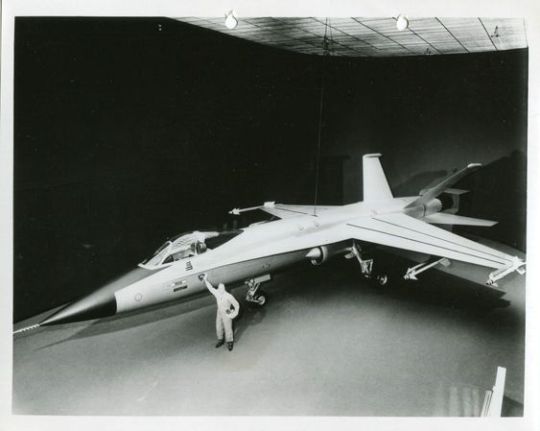
1:1 scale mock up of the Northrop P-530 Cobra concept, which later evolved to become the YF-17 prototype (then later the F/A-18 Hornet).[1600x1276]
; Ouvrir dans un nouvel onglet
13 notes
·
View notes
Text
Originality: Fanfiction, Genre, Trope
So I wasn't going to post this anywhere ever, but I saw a post that made me angry so now the internet, and my one follower, get my essay on Fanfiction. I wrote it for a class, in case the sectioning is a bit weird, but it is a piece of writing I'm proud of. I have an annotated bibliography I will post separately. A different title that didn't make it to the final report:
Is a Picture Worth a Thousand Words or is the Cost the Thousandth Minute Spent Here

Image from: “Canon vs. ‘fanon’: Genre devices in contemporary fanfiction.” (McCain 8)

I started reading at around the age of 5, and I loved it. I was one of the kids that actively went to look at the books in the book cubbies of the classroom during free time, and once I was good enough at reading, I began tearing through the series I had available. Magic Treehouse, Boxcar Children, fairy tales, books on horses, cats, dogs. My parents wanted my siblings and I to always be able to have the books we liked available to us to encourage reading practice, so my dad made us all personal bookshelves and out of necessity, I ended up with the largest one. In elementary school, I chafed against the 3 books a week checkout policy. In middle school and early high school, with my limit removed, I would check out as many as 15 (my record) books at a time. My backpack rarely went a day without having at least one book inside. When I was still a preteen, my parents tried to encourage us to read critically one summer by offering to pay us for book reports, and I went ahead and read my assigned book and two more, hiding myself in my closet for a day to read all the way through Eragon. I would take free books home to the point that my personal bookshelf was often double stacked. All that is to say that I have always really loved reading. So when a friend showed me a site that allowed me to read hundreds or thousands of stories about characters I already liked, that I could access anywhere through my phone, I fell head first into the world of fanfiction readers.


Image from: A screen capture of my bookmarks page, on 4/17/23

When a reader begins, they're given books with simple words. The books tend to have consistent vowel sounds, and use basic words from everyday life. If they learn the written language early in life, odds are they never felt the need to seek out a greater variety of literature at that point in time. Books were basic fictional stories that taught how the lines on the page turned into communication. It's only once the basics are established that a learner can start to read for themselves. Fast forward a couple years and with a solid foundation of vocabulary, a reader can begin to have choice in what they read. One of the earliest classifications for literature that a reader gets is genre. Even books built for kids can range from the fantastical, like the Magic Treehouse series, to nonfictional books about animals, space, and history. As the years stack and a child reads more and more, they will begin to both notice and be taught about patterns. Even without knowing the labels, humans are used to pattern recognition, and as Thomas C. Foster put it, “Part of pattern recognition is talent, but a whole lot is practice: if you read enough and give what you read enough thought, you begin to see patterns, archetypes, recurrences”(Foster 29). The classroom and experience show similarities in story structure like the Hero’s Journey model, in characters like the tragic hero, and in story elements like a dragon fight to save a damsel. At the point where a reader can recognize similarities, they can identify the types of stories they like, by genre, archetypes, tropes etc. Generally, people have a type of story that they like best, and shared qualities between two stories are attractive. A reader turned writer may like an idea, and want to put their own spin on it. The “what if” is the basis of all new stories. Foster, summarizing Northrop Frye, asserted that, “Literature…grows out of other literature; we should not be surprised to find, then, that it also looks like other literature”(Foster 29). In a world of literary repetition, what is originality? And in turn, what does that mean about fanfiction?


Image from: The back cover of Diana Winne Jones’ “Dark Lord of Derkholm”

Following Frye’s line of reasoning, Foster concludes a very bold idea: “there’s no wholly original work of literature”(Foster 29). Yet contrarily, he goes on to explain that one of his favorite novels contains multiple recognizable archetypes and story elements, and called it “wildly original”(Foster 29), very intentionally using the word original once again. Those two statements seem to contradict themselves, but he draws the line at the combination of the familiar into something different from any piece on its own. My personal belief is that original literature, mixed from familiar traits like genre and trope, is spawned from the onset of the author asking the question “what if?”. We both agree that external inspiration does not deny creativity.


Image from: The fandoms tab of the AO3 main page

Genre
It’s not uncommon to ask someone their favorite genre. Most readers have a favorite genre, or at least a top two or three. It’s also not uncommon for genres to coexist in a piece: A high fantasy story can have a romantic subplot, a science fiction tale can have undertones of tragedy, and an autobiography can focus on the comedic parts of life. Introducing an element from another genre can be a strategy to keep an audience engaged, a way to fill time, or a side effect of a kind of world building. Fantasy, scifi, autobiography, romance, tragedy, comedy, mystery, westerns, horror, realistic fiction, and more are all considered genres of prose by at least some portion of the population. There are genres for nearly every kind of written work imaginable. There are letters for business, condolence, between friends, there are applications for jobs, schools, grants, and many variations of poetry. Beyond “types of things,” what is genre, and what does it have to do with originality?
Like how there is no singular list of major genres, there is not really a strong definition of genre that. In an article for “The Kenyon Review”, Northrop Frye grappled with two diametric definitions of genre, one being that it precurses and is “independent of creation” and the other being that genre is that it is born of and reliant upon the genesis and comparison of new works (Frye 8). His ultimate conclusions are that genres come from archetypes, and that “all literary genres are derived from the quest-myth” (Frye 15). Though he never says it explicitly, it can be derived from his statements that genre is related generally to content of works. The researcher David Chandler agreed with Frye on the difficulty in defining genre, stating that “Specific genres tend to be easy to recognize intuitively but difficult (if not impossible) to define”(Chandler 2). He goes on to say genres exist because classifications are necessary to make distinctions and descriptions, but that genre is not a static concept, something closer to a negotiation between the culture and the idea of it. He specifically notes that “Each new work within a genre has the potential to influence changes within the genre or perhaps the emergence of new sub-genres (which may later blossom into fully-fledged genres)”(Chandler 3).
Suffice it to say, giving completely rigid definitions for genres does not work forever. Like with teaching metaphors, they work at a specific moment in time, but they might lack details, or be slightly incorrect, because the goal is to impart a main point rather than act as a perfect mapping of an idea. What can be said about genre is that it “provides an important frame of reference which helps readers to identify, select and interpret texts”(Chandler 7), and, in a later section about taxonomies of genre in film, indicates that similarities within a genre may be related to narrative, characterization, basic themes, setting, and iconography(Chandler 13). A loose definition can be drawn then, that literary genres are generally larger scale classifications of writing that involve the content of the text, useful for helping readers interact with the text for lower effort.
Due to genre being a wider classification of literature, it is not inherent that shared genre indicates a lack of original content. Conversely, because a genre tends to share enough content elements that by simply knowing the genre the reader understands parts of the book, genre forces some degree of shared features. Though not his intent, Chandler does address the mix of the two ideas, “while writing within a genre involves making use of certain 'given' conventions, every work within a genre also involves the
invention of some new elements"(Chandler 6). Though genre necessitates similarity, it does not inherently necessitate sameness.


Image from: The YouTube channel ColeyDoesThings
(Note: Do NOT look up unknown fanfic tropes, you will SEE things)

Trope
Like every other literary happening, most people encounter tropes regularly, even if they are not always identified. They can span genres, or largely exist within one. Examples include found family, the wise mentor, friends to lovers, other worlds, the chosen one, and long journeys. They can act as a draw, a dissuasion or a cue to readers for what may lie in store. They exist normally, in altered form, in parodied form and more.
Trope mimics genre in the issue of varying definitions in different spaces, but because it is a “smaller” concept, it is a little easier. Speaking from the view of literary YouTube space, the content creator Merphy Napier identified trope as ”a literary pattern that gets used often enough that readers obviously, clearly, and quickly recognize it and generally know what they’re in for” (1:10 - 1:22). This is, again, very similar in concept to genre, and for good reason: both need to be able to be used for clarification. Trope is, however, tied more closely to the story than genre is. Napier, later in the video, says that “All books either have tropes as the baseline of their story or as certain elements within the story. And what the author does to them to make them unique to that author, unique to that story, unique to those characters is what makes those books great” (7:42-7:55). Throughout the video essay, many examples pop up, namely characters, relationships, plot points, and setting, all of which fall under possible classifiers of genre. The general understanding that tropes are smaller scale classifications yet very similar to genre is well demonstrated by one of Napier’s examples: ”There are also certain genres that rely on tropes as their very definition. Time portal fantasy needs [time portals] to exist. If someone writes a time portal fantasy that doesn’t have the main element in it, the trope, this is bad” (4:05- 4:23). Overall, trope emerges as a smaller, similar structure to genre, though one a bit more story-centric.
Like with genre and exemplified in the second Napier quote, tropes are just a sum of a whole. They can be vital to a story, but there is always more. It should be said though, that most of the time, when people call a story unoriginal, it comes from the perception that too many genres and tropes are shared between two works- it is never just one or two. Because genre and trope necessitate similarity, the more shared genres and tropes, the more similarities are also shared. Thus, it is fair to say that two pieces of writing with enough shared tropes and genre seem unoriginal. Typically, when people do bring this up, it is due to a cause and effect- one story becomes popular and other writers jump on the bandwagon, writing similar stories in response to the popularized one. This explosion of subsequent stories is what generally leads a trope to be called overdone, and a story unoriginal. While there is merit in saying that in these cases the trope is no longer new, “overdone” is an opinion, based on the amount a reader is willing to read that trope (8:35 - 10:40).


Image from: “The Works inspired by this one:” list of the fanfiction “Yesterday Upon the Stair”

Fanfiction
If someone spends a certain amount of time engaging with the internet, they likely hear about or see fanfiction in one of its variant forms. Though some sites are more popular than others, fanfiction, called fanfics or even just fics, exists in a variety of spaces in a variety of forms. “Household name” sites for the written format include Archive of Our Own(AO3), Wattpad, Tumblr, and Fanfiction.net (ff.net), but podfics (fics of the audio variety) can be found on Youtube, and threadfics- fics written with the thread function of social media posts to get past the character limits -get written every day on Twitter. The average reader finds their way into the fanfic space by first finding the community writing, drawing, and generally creating or engaging with the content of a published media, known as the fandom.
Though fanfiction is sometimes called a genre, it varies in definition according to the context. The most basic definition is that fanfictions are “fictional works based on a work the author liked.” The meaning it carries in casual use is that fanfics are unmonetized, fan-made pieces of writing that are shared in an online space, generally designated for such writing. For example, fiction written by fans of Disney’s “Encanto” or the anime “My Hero Academia” would be called fanfiction, because of their format and the fact that they cannot be monetized without breaking copyright. However, Pride and Prejudice and Zombies is not called fanfiction, because it is a published piece of work, based on a piece of literature whose copyright has already expired. Once again, there is more than one definition, and in this case, finding a middle ground cannot encapsulate everything.
Fanfiction is a genre in that knowing a work is fanfiction can provide some expectations of what the story may contain, but fanfiction is a direct effect of other media, and while it is a type of fiction, it is larger than most genres are individually. The second definition may be correct by denotation, but it is not what people mean in conversation unless they want to imply even certain well known works like The Aeneid and fairytale retellings count as fanfiction. The third definition opposes the second, and even then it misses information. In her thesis, Katharine McCain, quoting Katherine Morrissey questions, ““How do we attempt to process a concept that is simultaneously claimed as an activity, an identity, and a connection to others?”(McCain 13). Fanfiction, as a concept, is too big. Fanfiction as a genre is inconsistent within itself, like every other genre. The definition of fanfiction, as it is used in conversation, misses the community that built and change the culture and practices.
However, even if it cannot receive a codified definition, modern fanfiction can be described by some of its key characteristics. McCain identifies her subject as “a particular type of fanfiction—one that is becoming more and more prevalent among fans and acafans alike: a fanfiction defined primarily by its communal nature, its reliance on the Internet, and its desire to combine the creative with the critical”(McCain 13). Looking at this through the lens of AO3, the internet enables quick access and easy communication. An author may start a work and draw inspiration from the comments left on the works, as most writers of multichaptered works do not have everything written when they start to post. A common practice is writing fanfiction inspired by other fanfiction, as pictured above, which is born of the common attitude, “___ idea was good/bad, but what if.” Taking an aspect of a story, often a trope, and tearing it apart then putting it back together is the fandom way, and occurs both with canonical content(from the original source material, and also called canon) and fanonical content (based on a general consensus within a fandom- generally on what should have happened- and also called fanon).
With that in mind, McCain’s four main characteristics of fanfiction are the sharing and overlapping of content, common language and medium, “bad” writing, and the overlap of the creative and the critical. (McCain 15,16) The first and fourth aspect are both heavily tied to fanon and canon, the former referring mostly to the chain of inspiration from the source to a writer to other writers, and the latter referring to the practice of asking “what if” in creation. The second and third aspect both refer to the largely unmoderated nature of the fandom. Fanfiction spaces are always inventing, and are unrestricted by published work conventions. Regarding the second aspect, new terms are invented and propagated within fandoms to communicate the new ideas they generate. Fans describe genres and tropes alike as “alternate universes(AUs)” if they are not present in canon, for example fantasy AUs or Coffee Shop AUs. Formatting also varies greatly from fic to fic, as authors are free to format their story with any format they can create, and often will make specific choices to impart certain ideas or feelings on their readers. For example, keeping everything in lowercase can be used to make the reader feel like something is off, or slightly incomprehensible. The third aspect largely refers to Sturgeon's Law, a term derived from Sturgeon's Revelation, and imparts the idea that “90% of everything is crap.” Fanfiction can be written by anyone, and requires no editor to be published. Naturally, every level of content emerges for viewing- there are only filters when the author employs them themselves.
Fanfiction is very blatantly unoriginal by most standards. It makes use of characters, settings, and tropes that can be directly traced to a source material. One writer, Patricia C. Wrede comments on her blog that “Fanfiction, as I have pointed out elsewhere, can be looked at as a sort of map of various alternate routes through the implied decision tree that the original writer used. The whole point is that it’s not purely original in itself; it has to have something to be an alternative to, or an expansion of”(Wrede, “Wrede on Writing”). An important note is on the wording “purely original.” Throughout the article, she agrees with the points of Frye and Foster, that near everything in existence draws from something else. Paired with my opinion that originality (not pure or true originality, just uniqueness) is spawned from the “what if,” this could mean that near everything has equal potential to be considered original or unoriginal. Genre and trope commonalities may have weigh-in as to the amount of uniquity in a work, but if hardly anything is “purely original,” there should not be a gold standard with which to punish other literature.
As a final note on originality, it is important to note that even though originality is idealized, what matters most in a story is that it entertains its audience. It can contribute to that enjoyment, but as Wrede puts it, ”Originality is not the be-all and end-all of literary quality; it is simply one of the many and several ingredients that writers use to create stories.”(Wrede, “Wrede on Writing”).


Image from: The “History of Equestria and Other Headcanon Stories by Ink Rose” playlist on the YouTube channel of Ink Rose

Beginning to read fanfiction was a massive change to my life, but not in terms of type of content, or quantity. My main genre is still fantasy, and any drop in quality I attribute to Sturgeon's Law, as without the levels of review that published works receive, every level of writing makes it to visibility. Rather, it greatly increased the accessibility of reading. I no longer had to carry around books to everywhere I went, I could bring a phone or a tablet and with all my downloaded stories, I could have a much greater amount of readable content for much less to carry with me. For example, on family car trips I was capped at bringing more than 4 or 5 books to avoid taking up too much space. After I burned through them all, I would have to find books from whoever’s house we visited, hunt someone down to play cards, or set up a movie player. Fanfiction, existing in the online space or in the downloads of an electronic device, meant I could bypass the space limit, and, should the mood strike me, read near indefinitely. And I do read near constantly- waking up in the morning, between classes, while waiting, in my free time, in the bath, during breaks in schoolwork, when I really should be doing work, before bed, in bed, and possibly more. Some days I read a total word count greater than any individual Harry Potter book (the longest one is 257 thousand words). I did similar things before fanfiction, sometimes a book or two a day, but now I can read it anywhere, anytime.
Being a fanfiction reader means that for any popular media, I can typically find a story with my favorite character. It means that for any less popular media sources, I reread fics over and over, and lament the lack of a large pool of writers while bookmarking the works of my favorite authors and subscribing to their accounts, their series, and their works to catch everything they make. It means checking my email every day to see if any stories I read have a new chapter, and deciding between reading those chapters, if I remember the story, or ignoring them, waiting for the fic to be completed before reading it all at once. It means filtering out story elements, ships, or tags I don’t like, and reading the tags if I don’t, and even still stumbling upon something I didn’t want to read. It means reading vastly more than my mom, but still being told I need to read more “real” books and stories. It means walking around with downloads that make up days of reading available at any time, and that collection still not even coming close to my bookmarks count. It means having an account that some swear is the most personal thing they own, saying they’ll take their account information to the grave. It sometimes means loving and hating my fandom’s community in equal measure, and choosing to read on or leave based on prevailing feelings. It means loving characters or settings or worlds powerfully enough to read and read and read and read and only stop by the limits of the fandom size and my willingness to change my standards.
The closest word to the love of reading is bibliophilia, or the love of reading/collecting books, but while I do love reading books still, I think I’m closer to a lover of stories. I could never read forever, as it is not where I find fulfillment, but it is where I find joy. I read everywhere all the time using my phone, from one of my dozens of open AO3 tabs or hundreds of downloaded fics. Nothing is entirely original, but it doesn’t need to be. I filter to my tastes and set myself loose, because I love reading fanfiction.


Image from: A screen capture of the main page of the fanfiction site “Archive of Our Own”

#fanfic#fandom#fandom things#originality#writing#tropes#genre:#essay#college essay#in this essay i will#But I actually wrote the essay#Honestly my prof was pretty goated for letting me write this#personal essay#I mean yeah I did it for a grade but I also did it for me#Ever had your mom be disappointed that you stopped reading books and spend time on your phone#Despite increasing your reading time#Yeah that's what fueled this bad boy originally#Honestly#I went over the word count#How are you today#If you made it this far in the tags#hopefully you're as fanfic feral as me#books#reading#I will fight anyone that tells me fanfic is all bad#I nearly fight some of my friends sometimes#Should I summon fandoms?#hmmmm#Not sure#3am thoughts
2 notes
·
View notes
Video
Freedom Fighter by Treflyn Lloyd-Roberts Via Flickr: Spanish F-5 23-10, wearing special "70 Years of Training Combat Pilots" tail markings, stands on static display at Fairford at the end of the 2024 Royal International Air Tattoo. Aircraft: Ejército del Aire y del Espacio (Spanish Air and Space Force) Casa/Northrop SF-5M Freedom Fighter AE.9-17/23-10. Location: RAF Fairford, Gloucestershire.
#Spanish#F-5#23-10#wear#wearing#livery#special#70#Years#Training#Combat#Pilots#tail#markings#scheme#stand#static#display#Fairford#end#2024#Royal#International#Air#Tattoo#RIAT#show#airshow#Aircraft#military
2 notes
·
View notes
Text
Bien qu'elle entraîne tant de souffrances et de pertes, la guerre est une activité rentable pour certains, comme les fabricants d'armes, leurs actionnaires et les banques qui prêtent de l'argent pour ces achats.

Le classement des plus grandes entreprises de l'industrie de la guerre, en fonction de leur chiffre d'affaires 2022. L'Amérique possède les plus grandes (tous les podiums) et les plus nombreuses (12 des 25 premières), rivalisant seulement avec la Chine (4), et loin derrière en volume, la France (4).
1. Lockheed Martin $63bn (fabricant du F35, des avions Hercules. Emploie 115 000 personnes, engloutit parfois 10 % du budget d'achat du Pentagone).
2. RTX (Raytheon) 39 milliards de dollars (missiles guidés Patriot, drones, systèmes d'interception de missiles, 182 000 employés). Au moins 20 membres du Congrès américain possèdent des actions dans ces deux entreprises, ce qui leur confère des intérêts directs lorsqu'ils votent sur les dépenses budgétaires.
3. Northrop Grumman 32 milliards de dollars (bombardiers, missiles intercontinentaux, 95 000 employés)
4. China Aviation Industry Company 31 milliards de dollars (500 000 employés dans de nombreuses sociétés subordonnées. 63 % des revenus proviennent de la production civile)
5. Boeing 30 milliards de dollars (156 000 employés, 44 % des recettes proviennent des ventes civiles, en plus de la production de bombardiers, de missiles, d'avions de chasse et d'avions de ravitaillement. A reçu de nombreuses aides de l'État, directement ou par le biais d'achats d'obligations par la banque centrale).
6. General Dynamics 30 milliards de dollars (106 000 employés, avions de chasse F16, missiles Tomahawk, chars Abrams et Leopard en collaboration avec l'Allemagne).
7. BAE Systems 25 milliards de dollars (Royaume-Uni, 93 000 employés, 10% détenus par Blackrock, chars Bradley, Challengers, chasseurs et sous-marins, collaboration avec de nombreuses entreprises précédemment citées et Airbus, coproduction de l'avion Concorde).
8. Norinco - North China Industrial Group 18 milliards de dollars (78 % de la production civile, 276 000 employés, armes, missiles, canons, drones, radars).
9. L3Harris Technologies (États-Unis) 14 milliards de dollars (46 000 employés, missiles hypersoniques, simulateurs de vol, systèmes de communication)
10. South China Industrial Group 13,5 milliards de dollars (78 % de production civile, 172 000 employés, munitions, fusils, artillerie)
11. Leonardo (Italie) 13 milliards de dollars (50 000 employés, avions de combat Typhoon en collaboration avec BAE et Airbus, satellites, hélicoptères, systèmes de ciblage)
12. Airbus EADS 12 milliards de dollars (France et autres pays de l'UE tels que les Pays-Bas et l'Allemagne. 80 % des revenus de l'aviation civile, 126 000 employés, participation dans Eurocopter, Eurofighter, gros porteurs A310)
13. HII Huntington Ingalls Industries (États-Unis) 10 milliards de dollars, construction navale, porte-avions, sous-marins d'attaque, frégates, 43 000 employés)
14. Thales (France) 9,6 milliards de dollars (48 % des recettes civiles, 76 000 employés, missiles, drones)
15. China Aerospace Technology Company 9,6 milliards de dollars (79 % des recettes civiles)
16. Leidos (États-Unis) 9,5 milliards de dollars (45 000 employés, 24 % de la production civile, aviation, informatique et équipement médical)
17. Amentum (États-Unis) 6 milliards de dollars
18. Booz Allen Hamilton (USA) 5,9 milliards de dollars
19. Rheinmetall (Allemagne) 5,1 milliards de dollars (25 000 employés, véhicules militaires)
20. Dassault Aviation (France) 5 milliards de dollars
21. Elbit Systems (Israël) 5 milliards de dollars (18 000 employés, drones, équipements de guerre électronique, contrat de modernisation des MiG et des IAR 300 pour la Roumanie, participation à la guerre de Gaza)
22. Rolls Royce (Royaume-Uni) 4,9 milliards de dollars (69 % de sources civiles, moteurs d'avion)
9 notes
·
View notes
Text

Avion d'attaque au sol Northrop A-17 du 4th Air Base Squadron – Aéroport d'Oakland – Californie – 1938
©United States Army Air Corps
#avant-guerre#pre-war#armée de l'air americaine#united states army air corps#aviation militaire#military aviation#avion d'attaque au sol#ground attack aircraft#Northrop A-17#A-17#oakland airport#californie#california#états-unis#USA#1938
13 notes
·
View notes
Text

Northrop YF-17 Cobra at Edwards AFB 16 Nov. 1975. looks like horace with the skinny landing gear. (t. r. waddington)
@kadonkey via X
usafphantom2: Northrop has always put forth good fighter designs..Do you agree?
12 notes
·
View notes
Text
Marco Valbuena | Chief Information Officer | Communist Party of the Philippines | April 17, 2024
The patriotic and peace-loving Filipino people, together with the American people, must condemn and reject the US government’s plan to provide the Philippines with $500 million in annual military aid for the next five years, in order to dump and preposition US war matériel in the Philippines.
This huge amount of US foreign military financing forms part of its war-mongering and war preparations against China, which is raising military tensions in the West Philippine Sea and the Asian region.
The planned US military aid will completely transform the Philippine military into an auxiliary force of the US military, that will be trained and tasked to handle US-provided weapons, to achieve US military objectives in its campaign to encircle and provoke China.
The increase in US military aid will also exacerbate the human rights situation in the Philippines amid Marcos’ order to intensify counterinsurgency operations. It will provide the AFP with more lethal and brutal force to carry out its campaign of political repression against the Filipino people.
At the instigation of US military advisers, the AFP has been spending billions of pesos to buy jet fighters, helicopters, bombs, missiles and rockets that have rained terror among the people in the countryside.
With the planned $2.5 billion military funding, American public money will again be used to bankroll the military-industrial complex. After having made large amounts of profits from US involvement in the war in Ukraine and support for Israel’s genocidal war in Gaza, American arms manufacturers such as Lockheed Martin, Northrop Grumman and Boeing are drooling to pocket even more money from US war provocations in the Asia-Pacific.
#the philippines#Filipino#CPP#military#war#imperialism#anti imperialism#revolution#communism#maoism#marxism leninism maoism#revolutionary#communist#maoist#mlm#socialism#marxism#world affairs#world events#world war#China#u.s. imperialism
4 notes
·
View notes
Text

Northrop YF-17 Cobra. It competed for a place in the Air Force against what would become the F-16, and was later picked up by the Navy and developed into the F/A-18
68 notes
·
View notes
Text
There is a growing global movement for a Free Palestine. Across the world, millions of people are engaging in demonstrations and organizing major marches in solidarity with Palestine. Our demands for an immediate ceasefire, cutting all aid to Israel, and lifting the siege on Gaza have broader support than ever. On November 4th, over 500,000 gathered in Washington DC for the largest march in recent times to stand in solidarity with Palestine. Protests with half a million people erupted on the streets of London, constituents across Canada occupied over 17 MP offices from coast to coast, and Belgian dock workers' unions have refused to transport weapons by plane or sea that are destined for Israel. We must keep building momentum and increase the pressure with more marches, walk-outs, sit-ins, and other forms of direct action directed at the political offices, businesses, and workplaces that fund, invest, and collaborate with Israeli genocide and occupation. NOW is the time for our mobilizations to grow in size, frequency, and focus; building a political climate that makes Israel’s business of genocide unsustainable. Already protesters have shut down highways, train stations, and bridges in the United States; activists have targeted Israeli weapons manufacturers; Belgian dockworkers’ unions have refused to handle weapons transports to Israel; Bolivia has cut diplomatic ties with Israel while Jordan, Chile, and Colombia have recalled their Israeli ambassadors. Be part of the change, take action, and make your voice heard as the global struggle for Palestine enters a new phase. Join the Shutdown for Palestine this Wednesday, November 29, 2023. We call on movements, organized labor, youth, students, media and healthcare workers, and all members of society to join us in demanding an immediate ceasefire, cutting all aid to Israel, and lifting the siege on Gaza. This call to action started on November 9, but we will continue to build up the momentum with ongoing days of action. No business as usual until Palestine is Free!
Walk out from work and/or school
Picket Israeli embassies and consulates
Picket against companies that profit from Israel’s occupation of Palestine (Lockheed Martin, Boeing, Raytheon, Northrop Grumman, General Dynamics, Elbit Systems)
Host speak outs
Wear kuffiyehs
Wear black armbands
Check for local actions
Look at toolkits
Join the webinar
3 notes
·
View notes